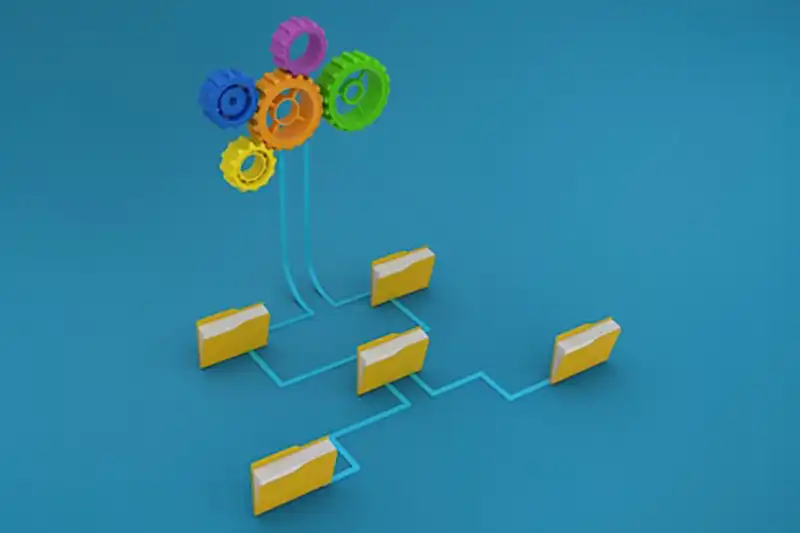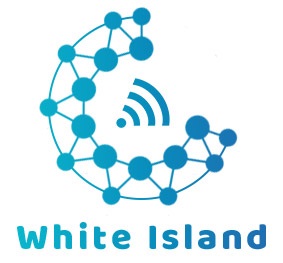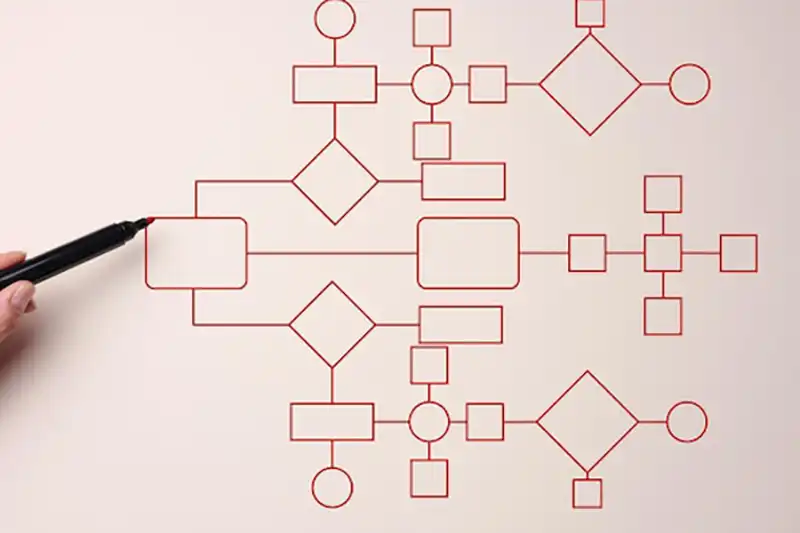In today’s fast-paced industrial environments, maintaining complex networks and systems efficiently is more critical than ever. MIMOSA (Maintenance, Information, Modeling, and Optimization for System Applications) provides a structured approach to managing assets and maintenance data. It is designed to help organizations streamline maintenance operations, reduce downtime, and improve the overall efficiency of their industrial networks. In this article, we will explore what is MIMOSA and what is its maintenance guide, how it works, and offer a practical guide on maintaining and optimizing systems using this powerful framework.
-
Introduction: What is MIMOSA and What is Its Role in Maintenance?
Sale MIMOSA is an open standard for managing and optimizing the maintenance and lifecycle of assets in industrial networks. It focuses on integrating data across various systems to offer a more efficient approach to asset management, performance monitoring, and predictive maintenance.
In industries where assets are the backbone of operations, such as manufacturing, energy, and utilities, MIMOSA enables organizations to stay ahead of potential equipment failures. By adopting this framework, companies can manage their networks with better data integration, predictive capabilities, and system optimization.
In simple terms, MIMOSA serves as a bridge between various systems and technologies, ensuring that everything from sensors to maintenance software can work together smoothly. The ultimate goal is to keep systems running efficiently and reduce downtime by managing the health of assets proactively. This framework’s maintenance guide is a roadmap for organizations looking to leverage its full potential.
-
Key Features and Components of what is MIMOSA and what is its maintenance guide
MIMOSA’s effectiveness in industrial maintenance stems from its key features and components, each designed to handle specific tasks in asset management and maintenance. What is MIMOSA and what is its maintenance guide? These questions are central to understanding how MIMOSA’s framework supports the optimization of maintenance practices, providing a structured approach to manage and maintain industrial assets efficiently.
- Data Models and Standards: MIMOSA offers standardized data models that ensure different systems (such as sensors, ERP systems, and maintenance management tools) can work together. These models help unify the vast amounts of data generated by various systems and make it easier to extract valuable insights.
- Asset Management: At the core of MIMOSA is its asset management functionality. It allows companies to track and manage the lifecycle of assets—from acquisition through operation to decommissioning. By keeping detailed records of each asset’s performance and condition, MIMOSA helps optimize the maintenance process.
- Predictive Maintenance: One of the biggest advantages of MIMOSA is its predictive maintenance capabilities. Using real-time data and advanced analytics, MIMOSA predicts when a piece of equipment might fail, allowing for preemptive maintenance. This minimizes costly breakdowns and extends the life of assets. What is MIMOSA and what is its maintenance guide? Understanding this framework is essential for leveraging its predictive maintenance features effectively, ensuring a more proactive and cost-efficient approach to asset management.
-
How MIMOSA Improves Maintenance Operations in Industrial Networks
MIMOSA significantly enhances maintenance operations by offering a unified approach to monitoring, analyzing, and managing network performance. Let’s look at how MIMOSA improves maintenance operations:
- Streamlining Data Integration: MIMOSA allows for the integration of data from a wide range of systems and devices, such as sensors, enterprise software, and maintenance tools. This integration makes it easier for maintenance teams to access relevant data in one place, making decision-making faster and more informed.
- Enhancing Maintenance Decision-Making: By providing accurate, real-time data on the health of assets, MIMOSA helps organizations make smarter maintenance decisions. Instead of reacting to failures, organizations can proactively plan and schedule maintenance based on actual asset conditions, significantly reducing downtime and operational disruption.
- Centralized Maintenance Management: MIMOSA also centralizes maintenance tasks, streamlining the workflow and ensuring that all team members have access to the same information. This leads to better collaboration and more efficient management of maintenance tasks.
-
Step-by-Step Guide for knowing what is MIMOSA and what is its maintenance guide
To successfully implement MIMOSA in your industrial network, follow this step-by-step guide:
- Planning and Setting Up
The first step in implementing MIMOSA is planning. Begin by assessing your current network’s architecture and identifying any gaps in asset management or maintenance processes. This is also a good time to set clear objectives for your MIMOSA implementation, such as reducing downtime or improving asset performance. - Infrastructure Setup
Next, ensure that your network infrastructure supports MIMOSA‘s requirements. This may involve upgrading or integrating existing systems, such as sensors, condition monitoring tools, and asset management software, with MIMOSA. Ensure that all components are compatible and capable of sharing data seamlessly. - Integrating Data Sources
Integration is one of MIMOSA’s core strengths. Connect all your relevant data sources to the MIMOSA-framework to ensure that real-time data can be collected and analyzed. This will help you build a comprehensive view of your assets’ condition. - Training and Knowledge Transfer
Once the infrastructure and systems are set up, train your team to effectively use MIMOSA. This includes understanding how to interpret data, perform predictive maintenance, and integrate the system into daily operations. Training is essential to ensure that everyone is aligned and can make the most out of the MIMOSA - Monitor and Optimize
After implementation, continuously monitor the system’s performance. Use the insights from MIMOSA to optimize maintenance practices and identify areas for improvement. Ongoing adjustments will help your system become more efficient over time. - Troubleshooting and Ongoing Maintenance of MIMOSA

Maintaining MIMOSA itself requires attention to detail and ongoing support. Here are some common issues that may arise and how to handle them:
- Data Inconsistencies: Sometimes, integration issues or faulty data sources may lead to inconsistencies. Ensure that all data sources are accurately calibrated and that systems are synchronized regularly.
- System Compatibility Issues: As industrial networks evolve, new technologies may need to be integrated with MIMOSA. It’s important to continually assess and upgrade systems to ensure they remain compatible with the MIMOSA
- User Adoption and Training: Resistance to change can be a challenge. Ongoing training and clear communication about the benefits of MIMOSA will help your team embrace the system and use it to its full potential.
Best Practices for Ongoing Support:
- Regular system audits and updates
- Maintaining open communication with support teams and vendors
- Continuously analyzing performance metrics and adjusting workflows accordingly
Q&A Section:
Q: Why is MIMOSA important for asset management in industrial networks?
A: MIMOSA provides a standardized approach to asset management, making it easier to track and maintain industrial assets, predict failures, and ensure optimal performance throughout their lifecycle.
Q: What industries can benefit most from MIMOSA’s maintenance guide?
A: MIMOSA is particularly valuable in industries like manufacturing, oil and gas, utilities, and transportation, where complex systems and machinery require constant monitoring and maintenance.
Q: How do you ensure the successful implementation of MIMOSA in your network?
A: Success in MIMOSA implementation involves careful planning, the right infrastructure, data integration, employee training, and continuous monitoring of system performance. What is MIMOSA and what is its maintenance guide?These are crucial questions to address at the outset, as understanding MIMOSA’s principles and guidelines helps ensure a smoother implementation process, maximizing the benefits of predictive maintenance and optimized asset management.
Q: What are the key benefits of MIMOSA’s predictive maintenance capabilities?
A: MIMOSA’s predictive maintenance allows organizations to anticipate equipment failures before they happen, reducing downtime, minimizing repair costs, and extending the lifespan of assets.
This article provides a thorough understanding of what is MIMOSA and what is its maintenance guide and offers practical steps for its maintenance and implementation. With a focus on asset management, predictive maintenance, and ongoing optimization, MIMOSA helps organizations maintain high-performance industrial networks with minimal disruption.
For more insights into industrial asset management and maintenance best practices, visit us at wizland.



